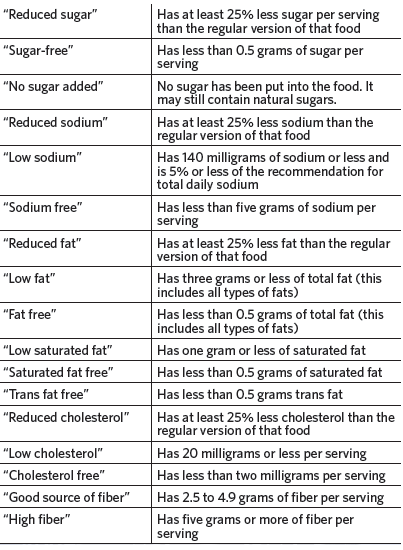- Find a DoctorDoctors by Specialty
- Cardiac Electrophysiology
- Cardiology
- Colon & Rectal Surgery
- Family Medicine
- Gastroenterology
- General & Vascular Surgery
- Gynecological Oncology
- Gynecology
- Infectious Disease
- Internal Medicine
- Interventional Cardiology
- Interventional Radiology
- Nephrology
- Neurology
- Neurosurgery
- Obstetrics & Gynecology
- Oncology
- Oncology & Hematology
- Orthopedic Surgery
- Otolaryngology
- Perinatology
- Psychiatry
- Pulmonary Medicine
- Radiation Oncology
- Rheumatology
- Sleep Medicine
- Thoracic Surgery
- Urology
- View All Doctors
- Our ServicesMedical Services
- Bariatric Services
- Behavioral & Mental Health
- Breast Care
- Cancer Care
- Critical Care
- Ear, Nose, & Throat
- Emergency Services
- Gastroenterology
- Glossary
- Heart Care
- Home Care
- Hospice & Palliative Care
- Imaging & Diagnostics
- Long-Term Care
- Nephrology
- Orthopedics
- Primary Care
- Rehabilitation Therapies
- Robotic-Assisted Surgery
- Sleep Services
- Spine Care
- Stroke Care
- Surgery Services
- Telehealth Services
- Urology
- Urgent Care
- Virtual Urgent Care
- Women’s Services
- Wound Care
- Our Locations
- Patients & Visitors
- About Us

from left to right: Kim Pryor, Mackenzie Pickett, Sybil Pritchard, Lindsay Miesel, Hailey Lowe, Laura
Young, & Nicole Colella. Not pictured: Debbie Fox, Courtney Wright, and Sarah Adamson.
By Lindsay Miesel, MS-MPH, RDN, LDN, CNSC
- Eat Breakfast! “Kick start your morning with a healthy and filling breakfast that includes lean protein, whole grains, fruits, and/or vegetables,” recommends Lindsay Miesel, dietitian at Parkwest Medical Center. “Ideas include a breakfast burrito with scrambled eggs, low-fat cheese, salsa, and a whole-wheat tortilla or a parfait with low-fat plain yogurt, fruit, and whole-grain cereal.”
- Make Half Your Plate Fruits and Vegetables. “Fruits and veggies add color, flavor, texture, and nutrients such as vitamins, minerals, and fiber to your plate,” says Miesel. “Experiment with different types, including fresh, frozen, and canned.”
- Watch Portion Sizes. “Aim for filling half your plate with fruits and vegetables and the other half with grains and lean protein foods,” says Miesel. To complete the meal, add a serving of fat-free or low-fat milk or yogurt.
- Be Active: Regular physical activity has many health benefits. Start by doing what exercise you can. Miesel suggests, “You don’t have to hit the gym – try taking a walk after dinner or playing a game of catch or basketball.”
- Get to Know Food Labels! Reading the nutrition facts panel can help you shop, eat, and drink smarter.
- Fix Healthy Snacks. “Healthy snacks can maintain your energy levels between meals,” says Miesel, “especially when they include a combination of foods.” Choose from two or more
of the following food groups: grains, fruits, vegetables, dairy, and protein. Try raw veggies with low-fat cottage cheese, or a tablespoon of peanut butter with an apple or banana. - Consult a Registered Dietitian. Whether you want to lose weight, lower your health risks, or manage a chronic disease, consult the experts! RDs can help you by providing sound, easy-to-follow nutrition advice that works for you.
- Follow Food Safety Guidelines. Reduce your chances of getting sick with proper food safety. This includes regular hand washing, separating raw foods from ready-to-eat foods, cooking
foods to the appropriate internal temperature, and refrigerating food promptly. - Drink More Water! “Quench your thirst with water instead of drinks with added sugars,” she recommends. “Stay hydrated and drink plenty of water, especially if you are active, an older adult, or live or work in hot conditions.”
- Get Cooking! “Preparing foods at home with your family can be fun, healthy, rewarding, and more cost-effective,” Miesel suggests. Master some kitchen basics, like dicing onions or cooking dried beans.
- Dine Out without Ditching Goals. “You can dine out and stick to an eating plan! The key is to plan ahead, ask questions, and choose foods carefully,” Miesel shares. “Compare nutrition information, if available, and look for healthier options that are grilled, baked, broiled, or
steamed.” - Enact Family Meal Time. Plan to eat as a family at least a few times each week. Set a regular mealtime and turn off the TV, phones, and other electronic devices to encourage mealtime talk. Miesel shares, “It’s fun to get kids involved in meal planning and cooking to help show them the joy of healthy eating.”
- Banish Brown-Bag Boredom. Whether it’s for work or school, prevent brown-bag boredom with easy-to-make, healthy lunch ideas. Try a wholewheat pita pocket with veggies and hummus, a low sodium vegetable soup with whole grain crackers, or a salad of mixed greens with low-fat dressing and a hard-boiled egg.
- Reduce Added Sugars. Foods and drinks with added sugars can contribute empty calories and little or no nutrition. Look for the “added sugars” line on the nutrition facts panel for more information.
- Eat Seafood Twice a Week. Seafood, including fish and shellfish, contains a range of nutrients including healthy omega-3 fats.
- Explore New Foods and Flavors. “Add more nutrition and eating pleasure by expanding your range of food choices. When shopping, make a point of selecting a fruit, vegetable, or whole grain that’s new to you or your family,” suggests Miesel.
- Experiment with Plant-Based Meals. “Expand variety in your menus with budget friendly
meatless meals,” says Miesel. “Many recipes that use meat and poultry can be made without, and vegetables, beans, and lentils are all great substitutes. Try including one meatless
meal per week to start.” - Make an Effort to Reduce Food Waste. Check out what foods you have on hand before
stocking up at the grocery store. Plan meals based on leftovers and only buy what you will use or freeze within a couple of days. - Slow Down at Mealtime. Instead of eating on the run, try sitting down and focusing
on the food you’re about to eat. Dedicating time to enjoy the taste and textures of foods can
have a positive effect on your food intake. - Supplement with Caution. “Choose foods first for your nutrition needs,” explains Miesel. “If you’re considering a vitamin, mineral, or herbal supplement, be sure to discuss safe and appropriate options with a healthcare provider first.”
Source: 20 Health Tips for 2020. Academy of Nutrition and Dietetics. 2019.
What’s on a Nutrition Facts Label?
Nutrition facts labels are on all prepared foods by law. You may also see nutrition facts labels on raw fruits, vegetables and on fish. The Food and Drug Administration oversees the safety of foods and beverages. This agency also says what information must be listed on the labels. These labels have a lot of information. They show the amount of sugar, carbohydrates, sodium, cholesterol, dietary fiber, different types of fats, and other information.
Keep in mind that the amounts listed on a nutrition label are for one serving, not the entire package. Check the serving size. The package may contain more servings than you realize. The percentages on the label are for a 2,000- or 2,500-calorie diet. Here’s a guide to what’s on a nutrition label:
- Serving size. This is the amount for one serving of the food. All of the values on the label are based on one serving size.
- Servings per container. This is how many servings are in the package.
- Calories. This is the number of calories in one serving.
- Calories from fat. This is the number of calories that come just from the fat in the food
- % Daily value. This is what percent the values are of a daily 2,000 calorie diet.
- Total fat. This is how much of all types of fats are in one serving.
- Saturated fat. This is how much saturated fat is in one serving. Saturated fat is an unhealthy fat.
- Monounsaturated fat. This is how much monounsaturated fat is in one serving. Monounsaturated fat is a healthier type of fat.
- Polyunsaturated fat. This is how much polyunsaturated fat is in one serving. Polyunsaturated fat is a healthier type of fat.
- Trans fat. This is how much trans fat is in one serving. Trans fat is an unhealthy fat.
- Cholesterol. This is how much cholesterol is in one serving. Cholesterol is unhealthy in
large amounts. - Sodium. This is how much sodium is in one serving. Sodium is unhealthy in large amounts.
- Total carbohydrate. This means all types of carbohydrates in the food. It includes sugar, non-sugar carbohydrates and fiber.
- Dietary fiber. Sometimes known as “bulk” or “roughage,” fiber is the part of food that the body does not digest. Fiber is healthy and helps food move through the digestive system.
- Sugars. This includes natural sugars and sugars that were added when the food was made. Sugar is unhealthy in large amounts.
- Sugar alcohols. Sugar alcohols are replacements for sugar in sugar-free foods. They don’t affect blood sugar levels as much as regular sugar. They include sorbitol, mannitol, xylitol, and maltitol. Too much of these can cause nausea and diarrhea.
- Protein. This is how much protein is in one serving. Protein is an important building block of the body.
- Other nutrients. Nutrients such as vitamins, calcium, and iron are listed near the bottom of the label. The percent values listed are for the recommended daily value for that nutrient.
Decoding the Front of the Package
A food package may say “low sodium” or “low sugar” on the front, but what does that mean? The FDA has legal definitions for these terms. Here’s a guide for understanding the claims on the
box or bag:

























